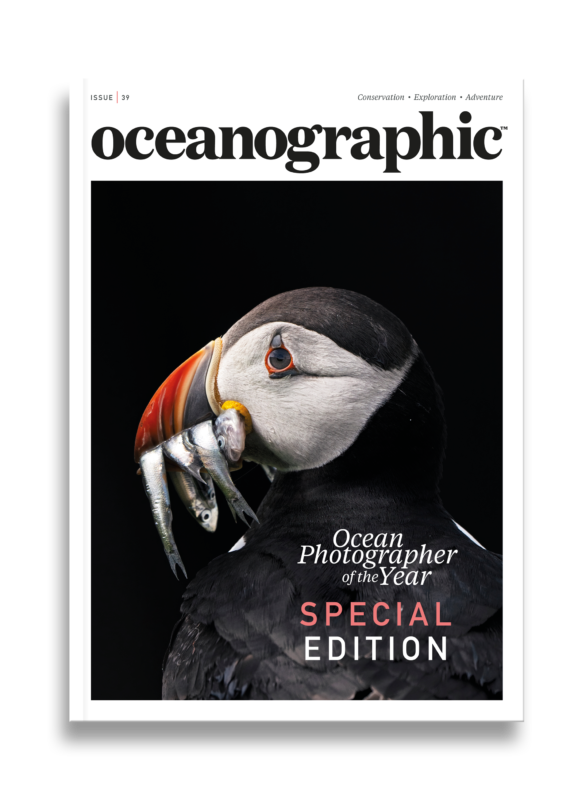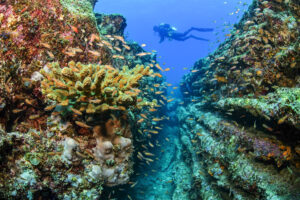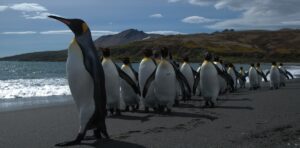Depths Star: New supergiant 'sea bug' resembles Darth Vader
A new species of supergiant Bathynomus isopod has been discovered in the Vietnamese waters of the South China Sea, and researchers couldn't help but draw comparisons with one of science fiction's most notorious Sith Lords.
In the waters off the Spratly Islands in Vietnam, a team of researchers and – evidently – long-standing, self anointed Star Wars nerds must have felt something… a presence not felt since the last time a new species of giant isopod had been stumbled upon.
It could have been a disturbance in the Force. More likely was it, though, the movements of this: a ‘supergiant’ isopod sea bug measuring more than 30cm length and with a head bearing an uncanny resemblance to one of science-fiction’s most iconic villains.
A giant isopod of the genus Bathynomus, this particular new species, discovered and described – for the first time – from Vietnamese waters, has consequently, been given the name vaderi, so inspired by the appearance of its head; one that – according to the team responsible for its discovery – closely resembles the distinctive look of Darth Vader from the Star Wars saga.
Weighing in at over 2.2 pounds and growing up to 12.8 inches, the Bathynomus vaderi is officially one of the largest isopods known to science. According to the study in which this supergiant sea bug was described, the species has so far only been found near the Spratly Islands, an archipelago in the South China sea.
The study’s authors suggest, however, that the B. vaderi may well live in other parts of the region.
Published in the scientific journal, Zookeys this month, the study examines samples of giant isopod caught by local fishers, finding that a few specimens had distinctive physical features that marked them as a new found species. Among these features, are the B. vaderi’s ‘pronounced depression in its hip bone’ as well as a ‘unique, bony ridge protruding from its coracoid bone’ something that distinguishes it from other supergiant isopods.
Well, that. And of course, the fact it looks like Darth Vader.

It’s noted in the paper – authored by Peter K L Ng, Conni M Sidabalok, and Thanh Son Nguyen,researchers from the University of Singapore, the National Research and Innovation Agency in Indonesia, and Vietnam’s National University, respectively – that in recent years, the Bathynomus have become something of a delicacy in Vietnam where they are often compared to lobster. This local demand has turned these ‘sea bugs’ into an expensive staple of the live-seafood market, leading to increased fishing pressures in the region.
This, the researchers state, provides opportunities and challenges in equal measure. They suggest that while the “rapidly growing market” could threaten giant isopods, it could also “pave the way for stricter regulations” and sustainable practices in deep-sea fishing.
The species has been commercially fished by trawlers operating in various deep-water parts of the Bien Dong (the East Sea, Vietnamese part of the South China Sea) and offshore of provinces in south-central coastal areas of Vietnam. Their popularity at live seafood markets has rocketed over the last five years.
While it is inarguable that this new species, the B. vaderi, is a ‘supergiant’ of its kind, it’s not actually the largest. That record is held by Bathynomus jamesi, a species which grows to around 20 inches and weighs up to 5.7 pounds. The Bathynomus species in general, however, belong to that intriguing population of marine life of which – owing to them making their habitats in largely inaccessible, deep-sea environments – little is known about.
That said, it’s with a degree of certainty we can reasonably conclude these deep-sea creatures won’t be piloting the Death Star anytime soon. They lack the opposable thumbs, for a start.


"*" indicates required fields
Printed editions
Current issue
Back issues

Current Issue
Issue 41 Holdfast to the canopy

Back Issues
Issue 39 Special Edition: OPY2024
Enjoy so much more from Oceanographic Magazine by becoming a subscriber.
A range of subscription options are available.








